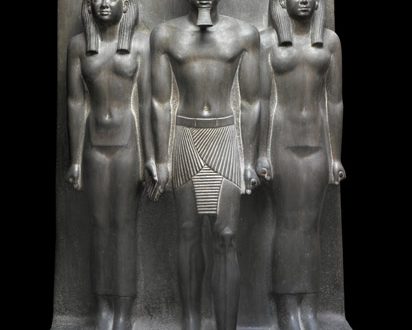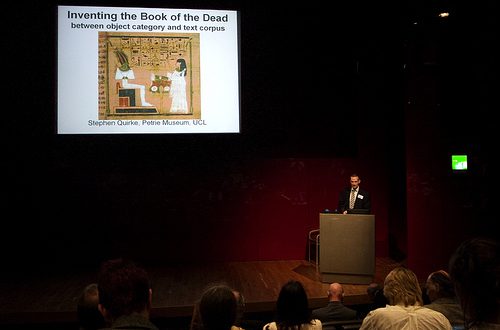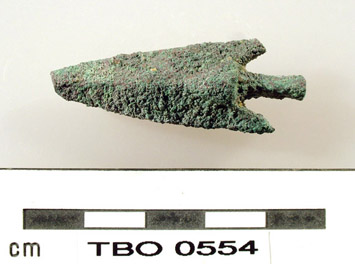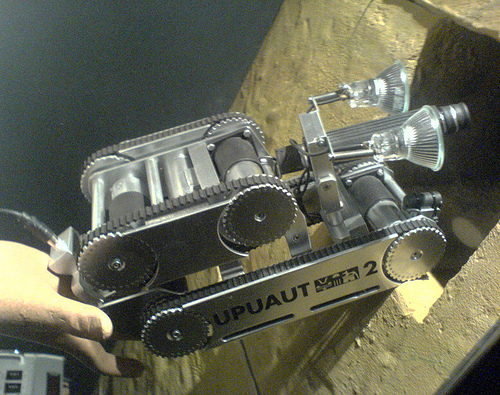 The Great Pyramid of Giza is one of the world’s oldest and most iconic ancient structures – a 4,500 year old mass of more than 2.3 million limestone blocks, built as tomb for Fourth dynasty Egyptian Pharaoh Khufu. Reaching 138.8 meters into the sky, for thousands of years it was the tallest man-made structure on earth.
The Great Pyramid of Giza is one of the world’s oldest and most iconic ancient structures – a 4,500 year old mass of more than 2.3 million limestone blocks, built as tomb for Fourth dynasty Egyptian Pharaoh Khufu. Reaching 138.8 meters into the sky, for thousands of years it was the tallest man-made structure on earth.
The Great Pyramid has attracted explorers and tourists by the bus load for decades. But not all of its secrets have yet been revealed. One set of features that remains a source of bafflement to experts are the two narrow shafts – each about 20 cm wide and 14 cm high – that wind from the so-called “Queen’s Chamber” towards an unknown destination somewhere within the structure.
Robots have been instrumental in exploring the shafts. Upuaut, designed by German engineer Rudolf Gantenbrink, made the first breakthroughs in 1993, before Boston firm iRobot’s Pyramid Rover managed to delve even deeper into the shafts in 2002. New, pioneering robots promise to be the key to unlocking more of Giza’s remaining mysteries yet.
Upuaut and At ‘Em
Director of Egypt’s Supreme Council of Antiquities (SCA) Dr Zahi Hawass is the man who has been at the centre of the exploration of the mysterious Giza shafts. A leading authority on the pyramid, he has investigated its narrow, winding corridors and chambers in more depth than perhaps any other living expert. It was he who in 1992 made the decision to close the Great Pyramid to visitors, in order to reduce the humidity inside that threatened to erode its stone.
Through Dr. Rainer Stadelmann of the German Archaeological Institute in Cairo, Hawass recruited engineer Gantenbrink to assist in installing a ventilation and humidity control system in the pyramid. A major part of this process was using a robot named Upuaut to clear out two long, blocked-up vents leading from the so-called “Kings Chamber” to the outer surface of the pyramid.
Upuaut (a different spelling of the god Wepwawet, the “opener of ways”) wasn’t actually a single robot, but rather various different models. The first robot, later dubbed “Father of Upuaut”, was a tiny poly-carbonate plastic prototype that failed to progress far when it was inserted into the shafts in March 1992. It was the larger Upuaut-1 – which had no drive system and was essentially a camera sled pulled by a winch system, with a front-mounted “Laser Rod” – that in May 1992 managed to unblock the passage ways and allow the installation of ventilation equipment.
Upuaut-2 – an electric motor-driven robot, built from aircraft aluminum with specially-designed Swiss precision gears, a laser guidance system and a Sony CCD miniature video camera – went on to later make a fascinating discovery. Flushed with success from the project in the Kings Chamber, the team decided to launch an exploration of the Queens Chamber shafts, which had no known outlets or purpose. Upuaut-2 managed to venture 60 meters into the southern Queen’s Chamber passageway, before it encountered a barrier that took everyone by immense surprise – a limestone “door” with two copper handles. 18 meters into the northern shaft, the robot encountered a bend of about 45 degrees to the left, and was unable to go any further. Clearly a more advanced robot was needed before any more progress could be made, but appetites had been whet as what incredible discoveries might lie beyond.
Knocking On TV Heaven’s Door
The next phase of exploration of the Queens Chamber shafts commenced in 2002, when a new machine – Pyramid Rover – designed by Boston-based firm iRobot was inserted into both the northern and southern passageways, in a project jointly sponsored by the National Geographic Society and the SCA.
A worldwide TV audience of millions watched live with baited breath as the robot drilled a small hole in the limestone blocking in the southern shaft, and inserted a small fibreoptic camera. The sigh of disappointment was global – on the other side, 20 centimeters ahead, was another door!
A few days later, the northern shaft too was investigated by the Pyramid Rover. At a distance of about 65 meters from the Queen’s Chamber another door very similar to the first one in the southern shaft was sighted. The team retired dismayed, but not deterred, to plan its next move. “The finding…” Robert Bauvel – an expert on ancient Egypt – told BBC News hopefully at the time, “promises almost with certainty that there is a chamber on the other side.”
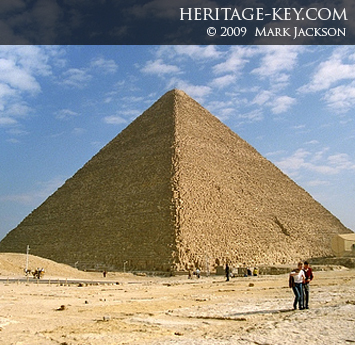
A Third Attempt: A Third Chamber?
The challenge of breaching the 20 centimeter space behind the first door, drilling through the second door (without causing unnecessary damage) and revealing what lies behind is a major technical challenge. It has taken years to develop a suitable robot to achieve this complex task.
A team affiliated with the School of Mechanical Engineering at the University of Leeds are the experts who have built the appropriate machine, following a long selection process by the SCA. The design of the robot and the nature of the project at present remains hush-hush (at the decree of the SCA), but it is known that after several different iterations and trials in Egypt last year (2008), it may be set to make its first incursions into the Giza tunnels as early as the summer of 2009.
Shafts from the King’s Chamber are believed to have had a religious function, as an escape route for King Khufu’s soul. The shafts leading from the Queens Chamber, and the doors within them, may have a ritual function as well – it has been speculated that the blocks may represent a physical manifestation of the obstacles the King’s spirit was expected overcome on its way to the afterlife, as alluded to in the Pyramid Texts. If that’s correct, then logically the shafts must lead to the final resting place of the King, meaning the chamber of Khufu himself may lie behind the doors.
The mystery of the Queens Chamber shafts are what Dr Hawass calls “one of the most exciting puzzles in Egyptology today.” Is one of the greatest archeological discoveries in history just one door away, as experts have speculated? As the rapid advancement of robot technology brings the answer closer, who knows what else the Great Pyramid might yet reveal?


